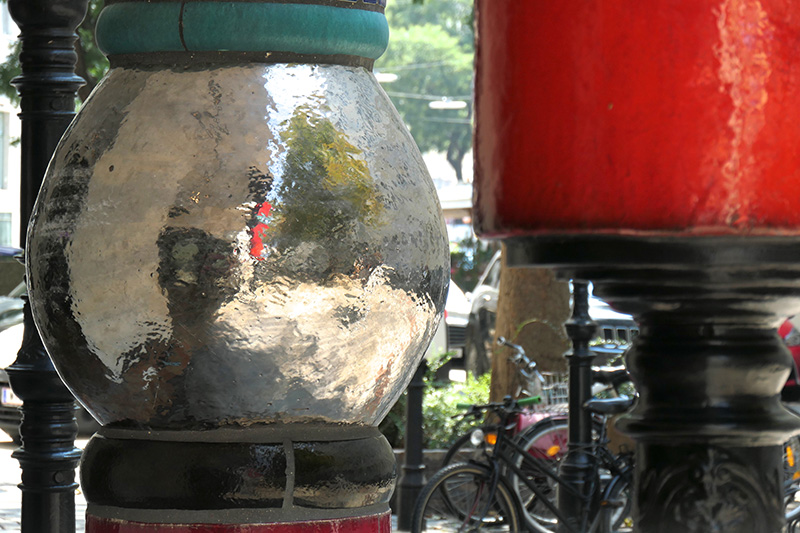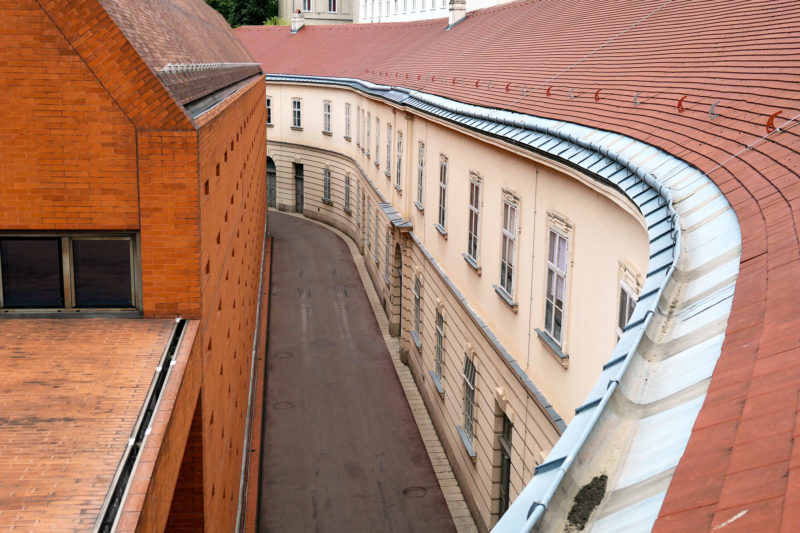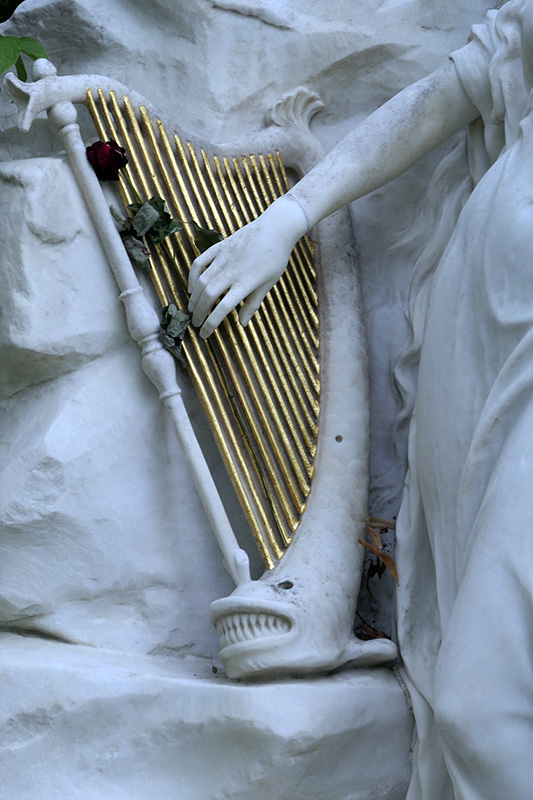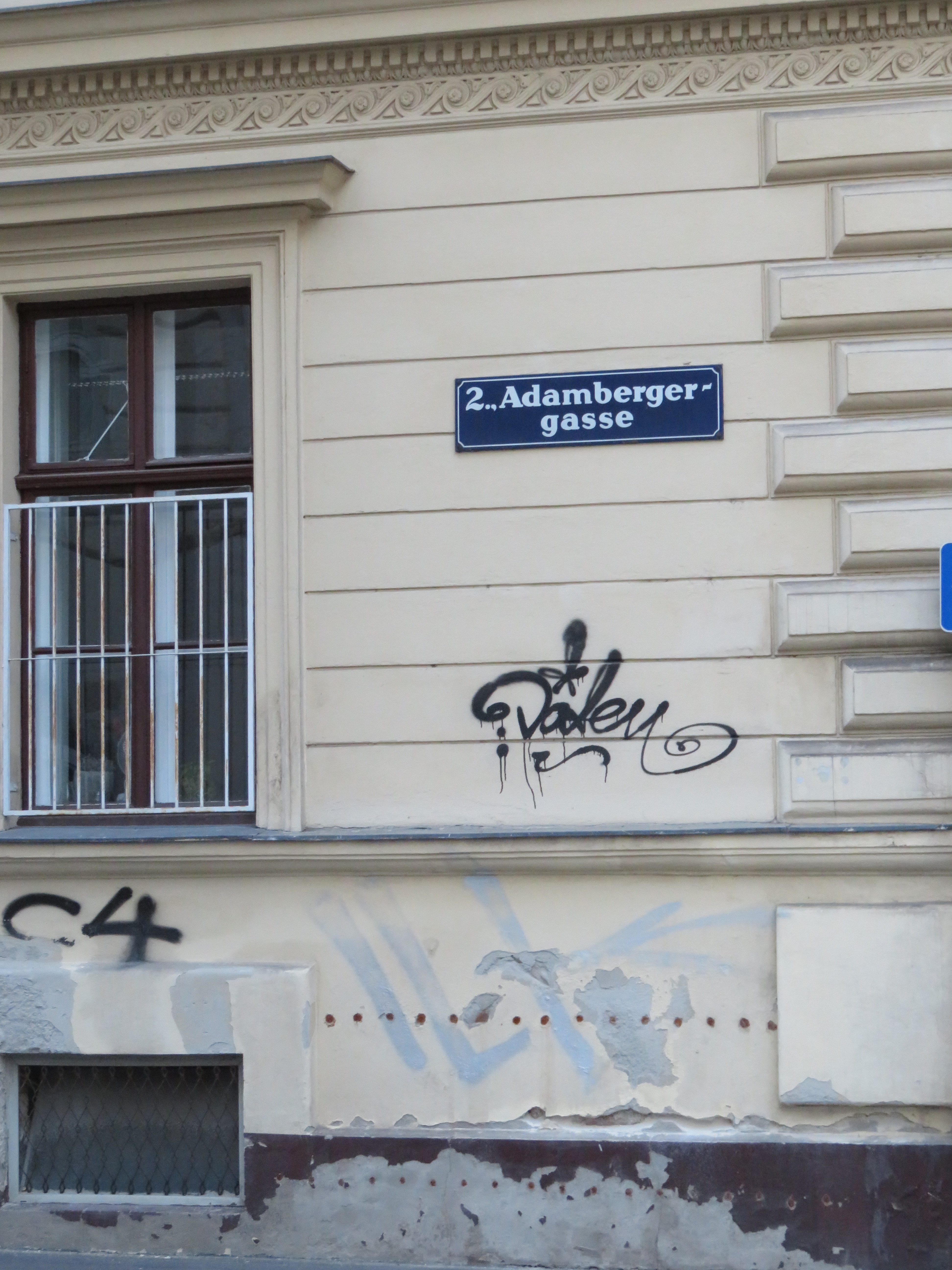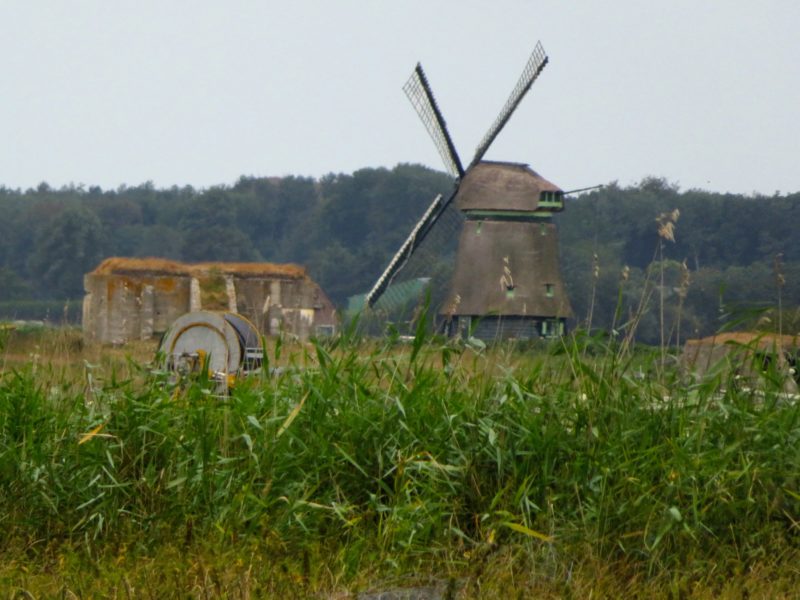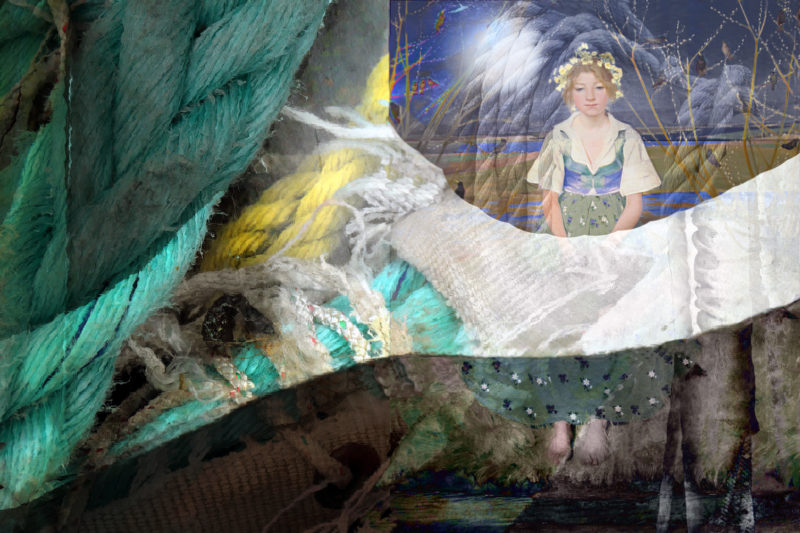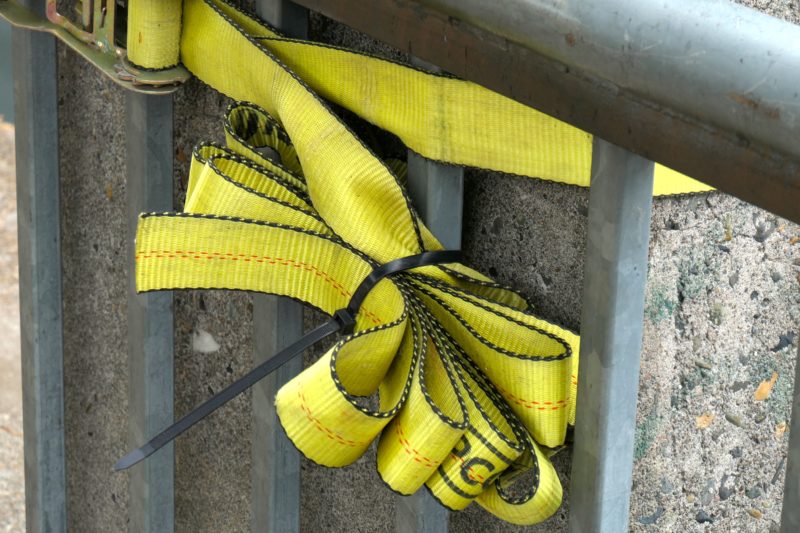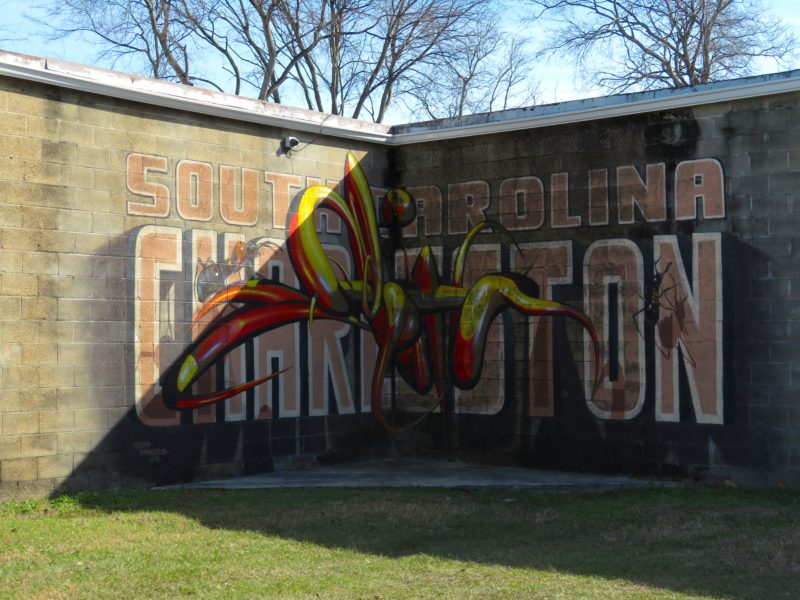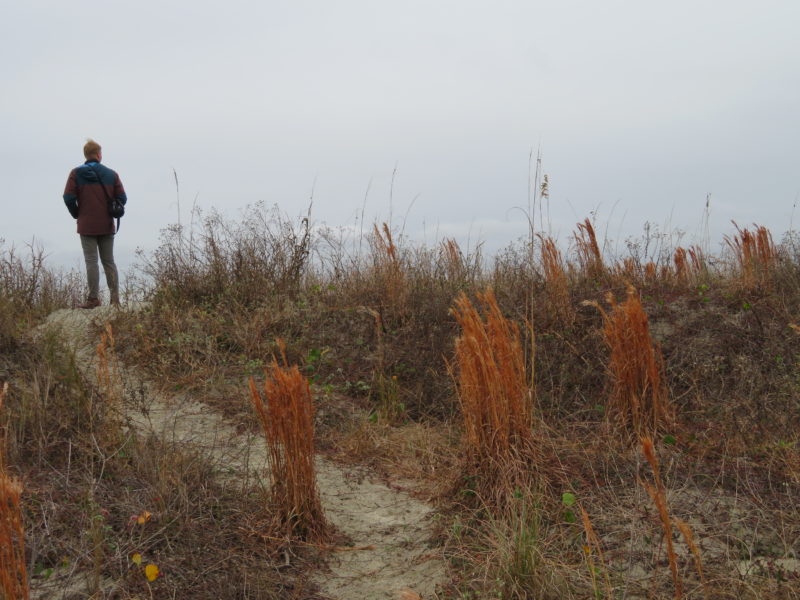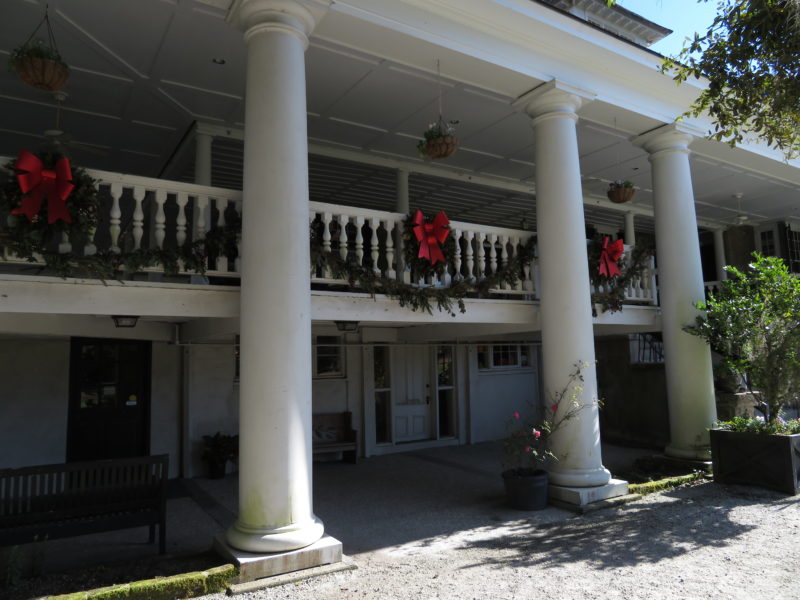Ever heard of the Austrian Friedrich Stowasser? Yes, you have. You just know him under the name Hundertwasser, the short form of his chosen pseudonym Friedenreich Regentag Dunkelbunt Hundertwasser (full of peace rainy day darkly colored hundred water.)
Yesterday offered views of an apartment house he built and a museum dedicated to him in a building of his own design (Kunsthaus Wien).
It is sort of funny that I was reminded of an exclamation mark when looking at the output of a man who abhorred straight lines.
Also notable that an artist, who fought standardization at every step, created a major oeuvre without changing much through the years, having found a certain schtick and sticking with it until the end. (Judging this by what I saw at the museum, I am not familiar with his painting in depth.)
The straight exclamation mark-impression was triggered by the ways attention is demanded by every design trick in the book, beyond the absence of right angles. Look here!!! Here is color!! Here is surprise! Here is daring!! Here is norm breaking!! All delivered with messianic zeal, once you read the artist statements. Let’s show photos of all the famous company I kept! Let’s be flamboyant!!!!!!
My reaction was perhaps strengthened by the contrast effect provided by an exhibition of images by Finnish photographer Elina Brotherus across the upper two floors of the Hundertwasser house.
https://www.kunsthauswien.com/en/exhibitions/elina-brotherus/.
Her art, on the whole, elicited associations to a colon: that threshold that invites you into something new and noteworthy. Brotherus, not particularly known in the US, is represented in major collections across European Museums and rightfully so. Her’s is quiet, piercing work, focused on self and landscape, depicting emotion with clarity and courage, confronting the viewer with deep personal revelations.
The mid-career exhibit also shows trajectory rather than stagnation – the recent years demonstrate less a focus on self and more an engagement with the world, through means of appropriation, choice of topics and collaborators and infusion of wit, rather than that nordic darkness so pressing in the early years.
A remarkable exhibit in content as well as form. My only quibble was the choice of image used to introduce the show: a reenactment of Kaspar David Friedrich’s “Der Wanderer über dem Nebelmeer” which allows you to see only the back of a person. It seemed motivated by the recognition factor of another famous piece of art and not all point to the strength of Botherus’ overall engagement with the viewer: looking straight at us in almost every photograph, face to face. (I realized, by the way, when sorting through my photographs of the day – which were not only permitted but invited by exhibit instructions – that I had not taken a single one of her looking at me even though those comprise the majority of the show. It felt like the intimacy of her gaze demanding empathy had elicited just that – not to be disrupted by intrusive documentation. Maybe that explains the curatorial decision making.)
Another thought provoking day in Vienna. Another photographer among the multitudes ….
